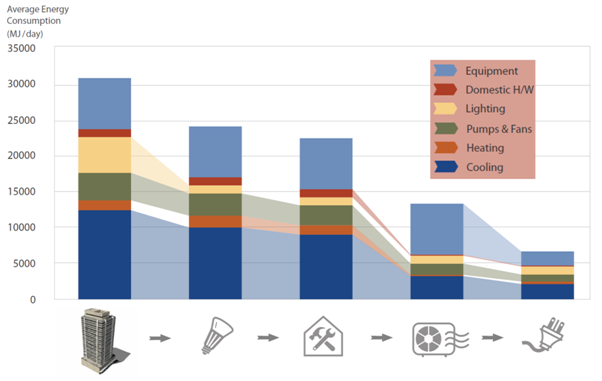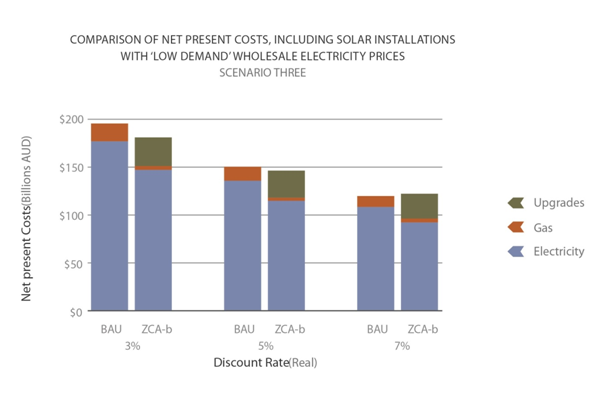Zeroing emissions from Australian buildings
Beyond Zero Emissions (BZE), in conjunction with Melbourne University’s Energy Institute, has developed a detailed plan showing how all existing buildings can reach zero emissions within 10 years.
The report, to be released on Thursday, shows that residential buildings can achieve a 53 per cent energy use reduction overall, with some typical home categories seeing over a 70 per cent reduction. Commercial building categories can reduce energy use by 44 per cent overall. In addition, gas appliances are replaced entirely by electric ones so that all energy can be readily supplied by zero emission renewable power generation.
While there are extra investment costs involved in upgrading buildings, these are entirely offset by savings from reduced energy consumption.
The study examines 11 different building types covering residential, office, education and retail applications across several climatic locations around Australia. It then examines how the following combination of existing commercial off-the-shelf technologies could reduce their energy consumption:
-- Improved thermal shell through use of insulation, draft proofing, better shading and window glazing and cool roof paint;
-- Use of highly efficient reverse-cycle air conditioners;
-- Heat pumps for water heating;
-- LED lighting;
-- Upgrading appliances to the best available energy efficiency already on the market;
-- Real-time energy monitoring; and
-- Electric induction cooktops.
As some examples of how this plays out, below are some samples from their report of energy reductions they believe can be achieved in an office building in Sydney and a home in Melbourne, but they look at a range of other locations and building types that achieve similar levels of energy savings.
The chart for a typical Sydney office building built around 1980 to 2000 is below.
Firstly, the more efficient lighting substantially reduces lighting energy consumption which because it gives off less heat, also helps reduce cooling energy consumption and the need for pumping air around the building. They then improve the thermal shell, replace the heating and cooling equipment with more efficient versions and upgrade the appliances such as computers, photocopiers etc to best in class energy efficiency.
Energy savings from a Sydney office building circa 1980-2000

The chart below is illustrative of a brick-veneer home in Melbourne.
Lighting only makes a small reduction to energy consumption while the improvements to the thermal shell make a very big impact. An efficient air conditioner and heat pump for hot water also make a significant difference, with further small savings seen from the induction cooktop and higher efficiency appliances such as televisions.
Energy savings from brick veneer home in Melbourne circa 1950s

In terms of overall costs, the report finds that while there are substantial investments that need to be made to improve energy efficiency and make greater use of solar PV, in the end there is little difference in overall costs from a business as usual scenario versus adopting the BZE plan.
Below are the estimates of the net present costs for the residential sector under a scenario involving high uptake of solar PV. It uses a real discount rate of 3 per cent (adjusted for inflation), which is similar to current the home loan rates offered by the major banks. Importantly these numbers assume the electricity savings only come only from offsetting wholesale energy costs, not the far higher retail charges. In reality one would expect savings beyond just wholesale costs.

In buildings outside the residential sector BZE looked at several discount rates, but even with a 7 per cent real discount rate, there’s little difference in net present value from business as usual.

There will no doubt be some argument about whether this buildings plan could be realistically implemented within a 10 year timeframe. But it serves to illustrate that a more sustainable energy future does not need to cost us an exorbitant amount of money if we become smarter and less wasteful in how we use energy.













